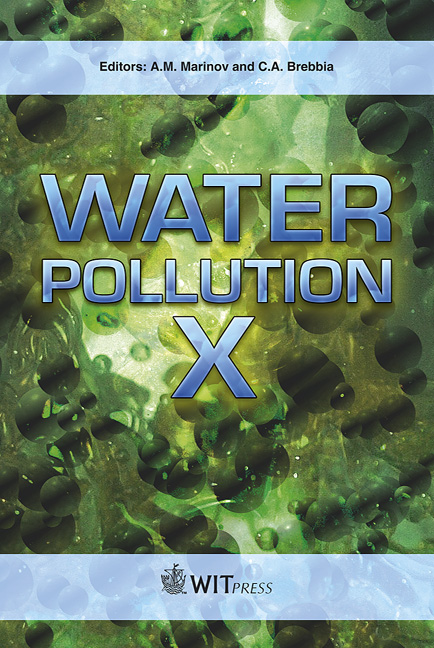Fate And Removal Of Pharmaceuticals And Personal Care Products (PPCPs) In A Conventional Activated Sludge Treatment Process
Price
Free (open access)
Transaction
Volume
135
Pages
11
Page Range
255 - 265
Published
2010
Size
645 kb
Paper DOI
10.2495/WP100221
Copyright
WIT Press
Author(s)
S. Suarez, F. Omil & J. M. Lema
Abstract
The fate and behaviour of 16 Pharmaceutical and Personal Care Products (PPCPs), including fragrances, hormones and medicines with different physico-chemical properties, was assessed during a conventional biological wastewater treatment process in a denitrifying/nitrifying pilot plant. The reactor was fed with a synthetic mixture that reproduced the chemical characteristics of a medium charged urban wastewater with an average composition of 500 mg/L of COD, 40 mg/L of N-NH4 + and 8 mg/L of P-PO4 -3. Selected PPCPs were spiked to this feed at concentrations between 10 and 40 μg/L. The pilot plant has been operated continuously for three years under stable conditions. The occurrence of PPCPs along the different compartments of the pilot plant was determined in a first step by measuring their concentrations in the liquid phase. This was further complemented with detailed mass balances in which the most relevant removal mechanisms during biological treatment have been included (volatilisation, sorption and degradation). The lowest removal efficiencies were obtained for carbamazepine, diazepam and diclofenac, whereas the highest transformations (>80%) were achieved for fragrances, fluoxetine, ibuprofen, naproxen and natural estrogens. Sorption has shown to play an important role in the biotransformation of musk compounds, which had previously shown not to be easily biodegraded, probably by enhancing their retention inside the pilot plant. The removal of the fragrance celestolide was additionally influenced by volatilisation in the aerobic, which supposed up to 45% of its overall elimination.
Keywords
activated sludge, fragrances, hormones, influence of operational conditions, removal mechanisms, pharmaceuticals





